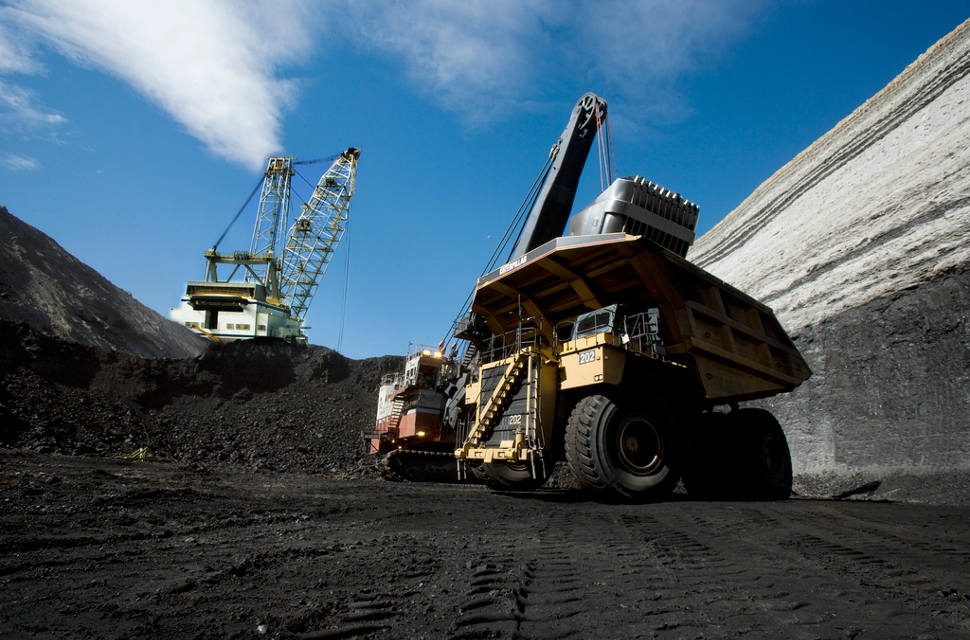The Decline of Coal is Likely to Continue
Coal mining is shifting away from underground mining, which is more labor intensive, to surface mining.
The coal mining industry often becomes a focus in national political campaigns. The debate often hinges around whether regulations are the main reason why coal mining employment has declined versus an explanation that emphasizes increases in productivity and technology in the industry, as well as the development of cheaper sources of energy that compete with coal. The potential for a return of coal mining jobs, and the revitalization of mining towns, harkens back to a time when there were more good-paying, blue collar jobs generally. This is rhetoric that resonates with many people, many of whom have no ties to coal.
It is worth taking stock of employment in the coal industry to add context to this debate. The average employment in the industry over the last three months was 50,400 jobs, just under the 2016 average of 50,500 jobs. This is 0.035 percent of nationwide employment. In contrast, employment in the retail industry is about 10.8 percent of total employment.
Coal mining industry jobs have been declining for a while; this is not something that happened over the past eight years. Unlike manufacturing, where employment fell in absolute terms around 2000 (likely due to trade policies), or construction, where employment fluctuates cyclically, mining industry jobs have been declining for almost one hundred years peaking at more than 860,000 in the early 1920s.
It is important to note that jobs in the coal mining industry are not necessarily indicative of the occupations one might think of when they think of coal mining. This is in part due to changes in how coal is mined. For example, most people think of underground mining when thinking of coal, but much of mining has shifted to strip mining, which is considerably less labor-intensive. Thus, the jobs remaining in the industry are likely not the same percentage of blue collar mining occupations as they were when the industry was disproportionately underground mining — i.e. there are probably more white-collar workers like engineers and programmers today.
It is also worth adding context to the recent decline in coal production. While coal mining employment has faced a long-term decline, production (including the number of mines) together with employment have fallen sharply since 2011.[1] This decline, which is sometimes blamed on former President Obama’s energy policies, was more due to increased competition from other low-cost energy sources — most importantly natural gas, but also renewable energy — and decreased demand for coal, according to a report from Columbia University. This is not a story about onerous regulations.
Experts have widely forecasted coal’s decline to continue despite President Trump’s promise to “put our miners back to work,” predicting that the best that could happen, barring major technical advances, is that the decline could slow. With one report claiming that the industry’s business model is “producing more coal with fewer workers” it seems unlikely that coal’s rebound would include significant job gains. Yet that hasn’t stopped Trump from touting specific mining jobs, supposedly in response to his reversal of mining regulations. The most recent example of this was the opening of the Acosta Deep Mine in Pennsylvania, which has been in the works since at least fall 2016 (i.e. before Trump was president). That mine will employ about 70 people. Part of the reason for the opening of this particular mine is the high cost of metallurgical coal, or coal used in steelmaking, which the mine produces. The rise in the prices of this coal is due to specific factors affecting production in Australia, the leading producer of “met” coal. Because of this, some experts call this type of investment in coal speculative.
So what could help make up for the loss of coal mining jobs? One answer is in what caused the decline of coal mining jobs to begin with: other sources of energy. For example, in 2014, the Bureau of Labor Statistics projected employment in 2024 for various occupations: among the fastest growing are wind turbine service technicians and solar photovoltaic installers, which are predicted to grow 108 percent and 24.3 percent respectively. The jobs are likely to be “good jobs” too, although the pay is not likely to be as high as unionized coal mining jobs.
More broadly, a recent Department of Energy report highlighted a 32 percent growth in wind employment (for those working full- or part-time in the industry) in 2016, and a 25 percent increase for solar. That is not to say that these new blue collar jobs will replace the cultural and economic connections with coal mining that many people and places have, nor that they will be concentrated in the areas that lost a significant amount of coal mining jobs. However, they do present one option for similar work. With the right policies, both broad (like a low interest rate policy to promote full employment) and specific (like retraining for coal miners), the economic effects from the decline of coal can be somewhat mitigated.
While these projections and trends do not represent huge, absolute jobs gains, they do suggest that there could be a larger upside to these industries and occupations. While coal mining once offered relatively high-paying jobs to significant numbers of people, it appears that time is in the past, even if the memory of that time is still important to people and places. As Trump withdraws from the Paris climate agreement, and emphasizes coal, he might be closing the door on jobs and industries that could fill the economic, although not necessarily the cultural, void left by coal.
[1] Labor productivity data seems to fit with this story: since the end of 2011, labor productivity growth in the coal mining industry, while erratic, has averaged almost 4.5 percent annually, suggesting that the decline of coal meant that the most productive or most automated mines have stayed in business.
Automation Coal mining Employment Energy development Energy policy Mining Natural gas Pennsylvania Regulation Renewable energy Surface mining

